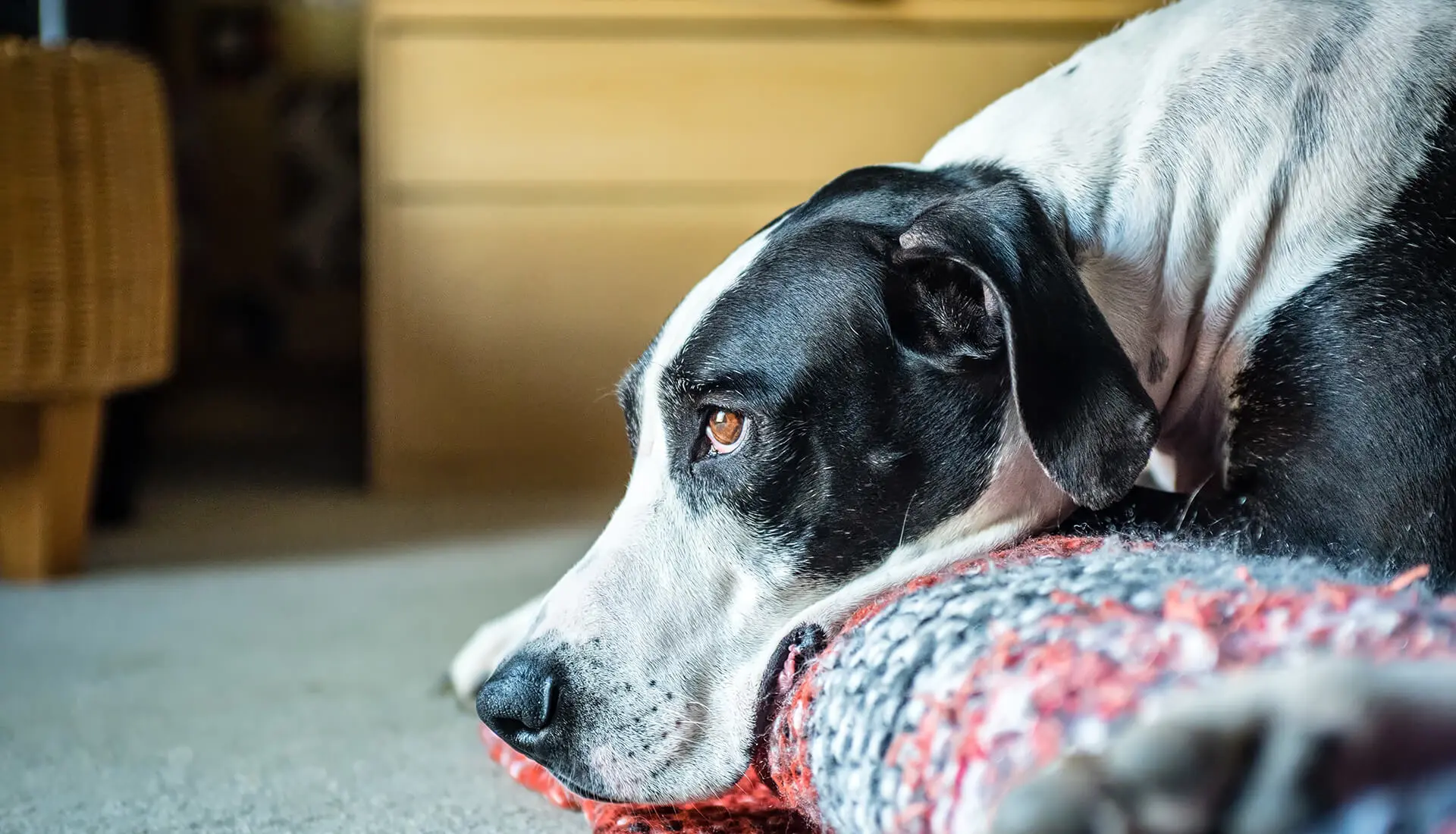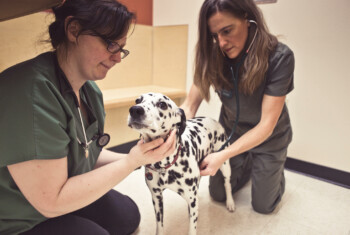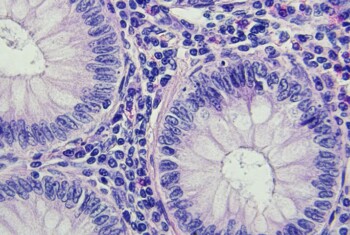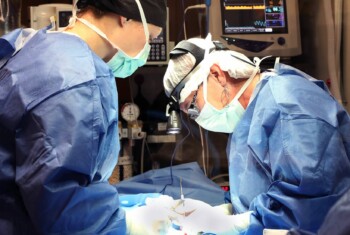Canine oral melanoma: Symptoms, treatments and prognosis.
6% of canine cancer is of the oral cavity and oral tumors are the 4th most common cancer in dogs.
Oral tumors are more common in male dogs. Breeds with a higher risk of developing oral tumors are the cocker spaniel, German shepherd, German shorthaired pointer, Weimaraner, golden retriever, Gordon setter, miniature poodle, chow chow and boxer.
Melanoma is the most common oral tumor in dogs. The average age of dogs impacted is about 11 years. Oral melanoma is a locally infiltrative tumor (can infiltrate deep into bone) and is reported to metastasize (spread) in up to 80% of dogs.
Signs and symptoms of oral melanoma.
The presence of a noticeable swelling in the mouth is the most common sign. Other signs may include:
- Increased salivation
- Facial swelling
- Weight loss
- Bad breath
- Pain
- Inability to eat
- Dropping food from the mouth
- Loose teeth
If the tumor has spread to local lymph nodes, swellings under either side of the lower jaw (submandibular lymph nodes) or in front of the shoulders (prescapular lymph nodes) may be enlarged. If the tumor has spread to the lungs, lethargy, decreased appetite and coughing may occur.
Diagnosis and staging tests.
Some melanomas can be diagnosed with a fine needle aspiration. With this procedure, a needle is inserted into the tumor and cells are drawn from it. Fine needle aspirations of oral tumors typically require some form of anesthesia or sedation.
Sometimes in order to get a conclusive diagnosis, a biopsy is required. A biopsy involves removing a small piece of tissue from the tumor site and sending it to a laboratory for a pathologist to look at under the microscope.
A biopsy is also required to discover important information about the tumor, such as confirmation of the diagnosis, surgical margins and the confidence that all cells have been removed. Biopsies require anesthesia.
Testing.
Due to the typical high spread rate of oral melanomas, it’s important to determine exactly what other organs, if any, are affected for treatment and prognosis (how well your pet will do with therapy). This is called staging.
Besides an initial biopsy, common staging tests for oral melanomas include:
- Complete blood count and chemistry profile
- Fine needle aspiration of enlarged local lymph nodes
- Three x-rays of the chest and sometimes an abdominal ultrasound to look at the spleen, liver and other abdominal organs
All of these staging tests do not require sedation or anesthesia.
If your veterinarian has not removed the tumor, a CT scan (cross-sectional x-ray through a particular area under general anesthesia) may be recommended for surgical and/or radiation therapy planning. This will help maximize the chance of getting a complete margin surgically or help with radiation therapy treatment planning.
Treatment & potential side effects.
Treatment options for oral melanomas include:
- Surgery
- Radiation therapy
- Chemotherapy
Which options are chosen are largely dictated by the location of the tumor within the mouth, the surgical margins after removal, whether there is the presence of spread and any other concurrent conditions a pet may have.
In general, surgery and radiation therapy are recommended for local control (removal of the tumor from its current location) and chemotherapy for systemic control (controlling any cells that could have broken away from the primary tumor and are circulating in a pet’s body).
Surgery.
With surgery, the surgeon will attempt to remove the entire tumor, along with as much of an area of normal tissue around it as possible based on the location of the tumor. Sometimes this requires removal of part of the jaw.
Your dog will still be able to play with toys, eat, drink and chew bones with part of their jaw removed.
Surgery requires general anesthesia and for your pet to stay in the hospital for the day and possibly overnight, so we can control his/her pain and ensure the incision is healing well.
Surgical results.
Satisfactory cosmetic and functional outcome is in excess of 85%. Surgery maximizes the chance that all the cells will be removed, and we will not have to follow up with additional local control, such as additional surgery or radiation therapy.
Additional local control options for an incompletely excised tumor include another surgery or radiation therapy. (On the pathology report, the tumor cells go right up to the cut surface, so there is a chance some cells may be left on your pet.) Side effects to surgical excision are extremely rare and can include opening of the wound and infection.
Radiation therapy.
Radiation therapy can be thought of as an intense x-ray beam that is delivered to the scar or tumor only. It can be used in two different settings: post-operatively or if a tumor is too large to remove. Oral melanomas tend to be very responsive to radiation therapy whether there is just a scar or a tumor still present.
Radiation therapy protocol.
The radiation therapy protocol for oral melanoma is a treatment twice weekly for seven total treatments. The mouth can be very sensitive to radiation therapy and side effects can include redness, inflammation and ulceration of the treatment site, as well as an increase in salivation that rarely affects appetite or energy level.
These effects typically begin towards the end of therapy and take about one week to completely resolve. We will treat your pet with antibiotics, anti-inflammatories and pain medications if they are not feeling well.
Chemotherapy.
Chemotherapy can also be used for the treatment of oral melanomas in these situations:
- Non-surgically excisable tumors
- Tumors with the presence of metastatic disease (spread to other organs)
- After surgery or radiation therapy
The most commonly used chemotherapy drugs are the Merial melanoma vaccine, carboplatin and dacarbazine (DTIC).
Chemotherapy results.
Chemotherapy is very well tolerated by dogs, especially the Merial melanoma vaccine. The most commonly reported side effects to the vaccine are local irritation at the injection site and loss of normal skin pigment (nose, skin, foot pads, etc.)
More traditional chemotherapy (carboplatin  and DTIC) can cause mild and self-limiting stomach upset that manifests as a decrease in appetite, vomiting and diarrhea about 3-4 days post-therapy and myelosuppression (suppression of the bone marrow and a decrease in the white blood cell level) about 7-10 days post-therapy, depending on the drug being used.
and DTIC) can cause mild and self-limiting stomach upset that manifests as a decrease in appetite, vomiting and diarrhea about 3-4 days post-therapy and myelosuppression (suppression of the bone marrow and a decrease in the white blood cell level) about 7-10 days post-therapy, depending on the drug being used.
Myelosuppression and a low white blood cell level can make your pet susceptible to an infection. Therefore, we have to monitor complete blood counts (CBC) very carefully throughout therapy.
Most dogs feel absolutely fine even if they have a low white blood cell level, but some can become mildly lethargic.
Prognosis.
The average survival time of untreated dogs is reported to be 65 days. With surgery alone, the average survival times and 1-year survival rates of dogs range from 5-17 months and 21-27%, respectively. In general, the smaller the tumor and the closer to the front of the mouth it is, the better the prognosis. Response to radiation therapy is excellent at 83 – 100%, with survival times ranging from 211-363 days.
Traditional chemotherapy such as melphalan and carboplatin provide about a 30% response rate, with a tumor present for approximately four months.
The Merial melanoma vaccine is a new DNA vaccine treatment that is geared toward stimulating your dog’s immune system to fight off the melanoma. Preliminary results with dogs with advanced disease are an average survival time of 224-389 days, which significantly improves to 589 days if the primary tumor is controlled with either surgery or radiation therapy.
Find a BluePearl Pet Hospital oncologist near you.



